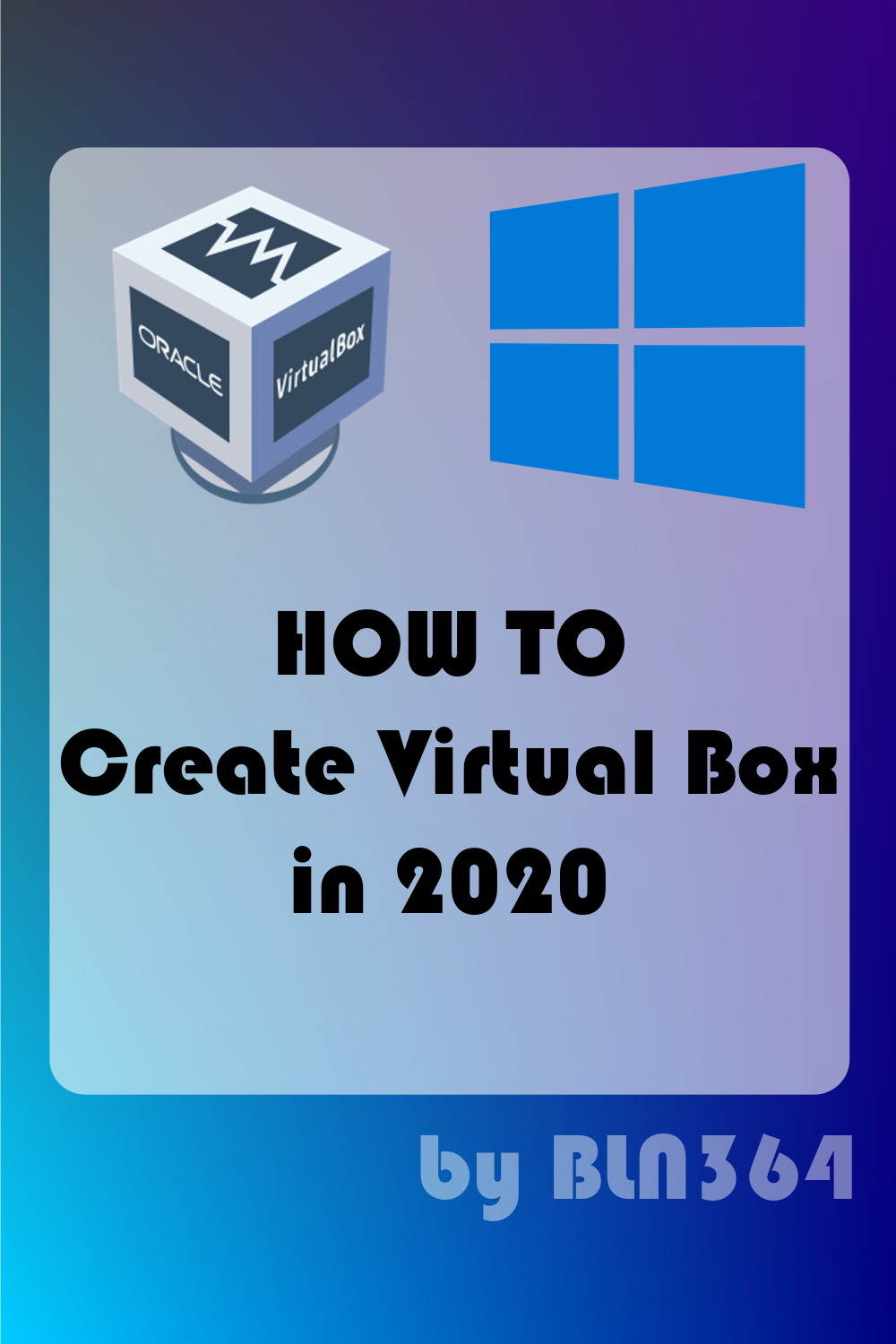Motivation
Hi all. I am currently preparing another project that is based around communication via IPv6 protocol on LabVIEW. For that to be possible I needed to setup two VM machines. On a VM machine I need to install Windows 10 and connect together internally. So, I decided that this can be create topic on it’s own and started writing this guide on how to start with Virtual Machines in 2020.
Oracle VirtualBox Installation
So let’s start. I would like to set up one VM machine and then just copy that VM into another.I’m using the VirtualBox program for virtualization, that I wound out offers a lot of functionality with easy to understand user interface.

After the installation we can open the VirtualBox program where we are greeted with welcome screen show on image below.
We can create a new Virtual machine by clicking on a blue star sign that says NEW. .
But first let’s decide on which OS we will install on our machines. For this example we will use Windows 10. So, let’s download the Windows 10 image.

Windows 10 ISO image
Go to: https://www.microsoft.com/en-gb/software-download/windows10, And click on Download Tool Now. This step is the same if you want to create a bootable USB stick. Run downloaded .exe file and then select Create installation media option shown on image bellow.


With the first option we want to select Create installation media. With this option we can create bootable USB stick or in our case ISO image file.

Now select option to create IOS file.
And now wait for ISO file to be ready. After that we need to create an actual Virtual machine. After pressing on new we have next popup window.
Create Virtual Machine
Click on NEW in Oracle VM VirtualBox Manager. Next, select the OS and destination of our VM file. In the next popup we can select the amount of ram that we use in our virtual machine. For this purpose we will give our VM 2GB of ram (hope that this will be enough).


Create Virtual Hard Drive
Next, we are creating a virtual hard drive.




Configuration of Virtual Machine
We have our Virtual machine and we need to do some setting, so click on settings tab.
On the System tab you can optimize Base memory(ram) and number of Processor cores. In my case and because I’m creating these virtual machines on my Ryzen 2500u laptop with 8GB of ram, I’m using 2GB of ram per machine with 3 threads.
Next, we need to set our storage and select our Windows IOS image.


Click on Empty and click then on the disk icon and select your download ISO image. The last thing we need to change is the network tab. We want for our virtual machines to be visible in our local network and for that reason we need to change Network 1 attached to NAT to Bridge adapter.
We are finished with VM configuration and we can start up the virtual machine. Next, we need to install Windows 10.
Windows 10


We configured VM to boot to Windows 10 ISO file, so right after we start our VM, we will get Windows Installation window. After basic windows installation and machine reboot we can boot into our virtual machine with windows 10 OS.
We are close, but not yet finished, we need to do couple of things:
- VM Display driver installation
- Create shared folder
- Enable Drag and Drop and Clipboard functions
- Enable USB 3.0
VM Display driver installation

This part is simple, when you know where to look. We need to insert ISO image with Guest Drivers for Virtual machine. But why do we need this? If we look at our 1080p screen our virtual machine has a much smaller resolution (shown on image above). We want to achieve result shown on image below.


We can easily fix this by inserting Guest Additional CD image (Devices->Insert Guest Additional CD image). Then , just open This PC on your VM and install guest additional CD.
Much better, next topic.
Create shared folder
On your local PC create a folder that you want to be shared with your VM. In my case that is E:vmShare. Now go in your VM and:



Enable Drag and Drop and Clipboard functions
This is very simple but useful. We need to select two options.


Enable USB 3.0
This last step is unnecessary complicated. We need to enable USB 3.0 controller. For that we need to power off our VM and go into Settings and then USB tab.

If we want to select USB 3.0 or USB 2.0 Controller we have Invalid setting detected. We need to fix this, and for that to work we need to figure out exactly version of our Oracle VirtualBox, by selecting Help->About VirtualBox..
Version is 6.0.16, so we now need to download Oracle VM VirtualBox Extension Pack for exactly our version of VirtualBox. So, let’s google for Oracle VM virtualbox extension pack 6.0.16.
We can go to https://www.virtualbox.org/wiki/Download_Old_Builds_6_0 and download and install VirtualBox 6.0.16 Extension Pack.

Now we can select USB 3.0 Controller without any warnings and/or errors.
And this is basically it. All basic configuration that you may need when starting with virtual machines in 2020. Now you can use https://ninite.com/ for fast install of necessary programs.
We did all of this work and create virtual machine, but only one. We need two. How can we clone our existing VM to create it’s own copy?
Cloning VM
You guest correctly, we can easly clone our existing VM into another VM machine. That is the part when all of our work is paying off.
The way that I found that works every time is to simply locate your VM hard disk, copy it and rename it. This can take some time.
After you have second virtual hard disk, we need to create second Virtual Machine, but this time without creating new virtual hard disk, so we want to use existing hard drive as shown on image below. Of course select new copied virtual hard disk,

Now, the last, last thing is we need to change UUID for our copied virtual hard drive. We can not have two virtual hard drives with the same UUID. I found great how to do blog on this topic that I think is perfect , so please check:
https://tothecore.sk/2018/08/20/changing-uuid-for-virtualbox-virtual-machines/

Conclusion

And that’s all. I think that, if you followed this tutorial have everything that you need to use virtual machine comfortably. For me, virtual machines give me a way to play around with different Linux distributions and try cool communication project on one PC, but what do you think.
Did you manage to get your virtual machine up and running? Do you have some better way of creating and/or configuring virtual machines?
Anyway, I hope that you enjoyed and learned something in this post and if you are interested check out my other posts at:
And, as always, see you in the next one.

